An Investigation of Atmospheric Mercury from Power Sector in Thailand
Abstract
:1. Introduction
2. Method and Materials
2.1. Approach
- : Emissions of power plant i
- : Fuel consumption of fuel type k for power plant i
- : Emissions factor of emissions control devices m, fuel type k, power plant i
2.2. Characteristics of Atmospheric Hg Emissions from Power Sector in 2010
| Fuel Type | Combustion Technology a | Hg Content b (g/ton) | Air Pathway c (%) | Control Efficiency (%) | EFs d (g/ton) |
|---|---|---|---|---|---|
| Lignite | Pulverized Coal-fired | 0.12 | 99 | 67 | 0.039 |
| Stoker boiler | 0.12 | 90 | 40 | 0.065 | |
| Anthracite | Circulating Fluidized | 0.27 | 90 | 40 | 0.146 |
| Bituminous | Circulating Fluidized | 0.03 | 90 | 40 | 0.016 |
| Fuel oil | Not specific | 0.07 | 90 | 10 | 0.058 |
| Biomass | Stoker boiler | 0.007 | 83 | 10 | 0.005 |
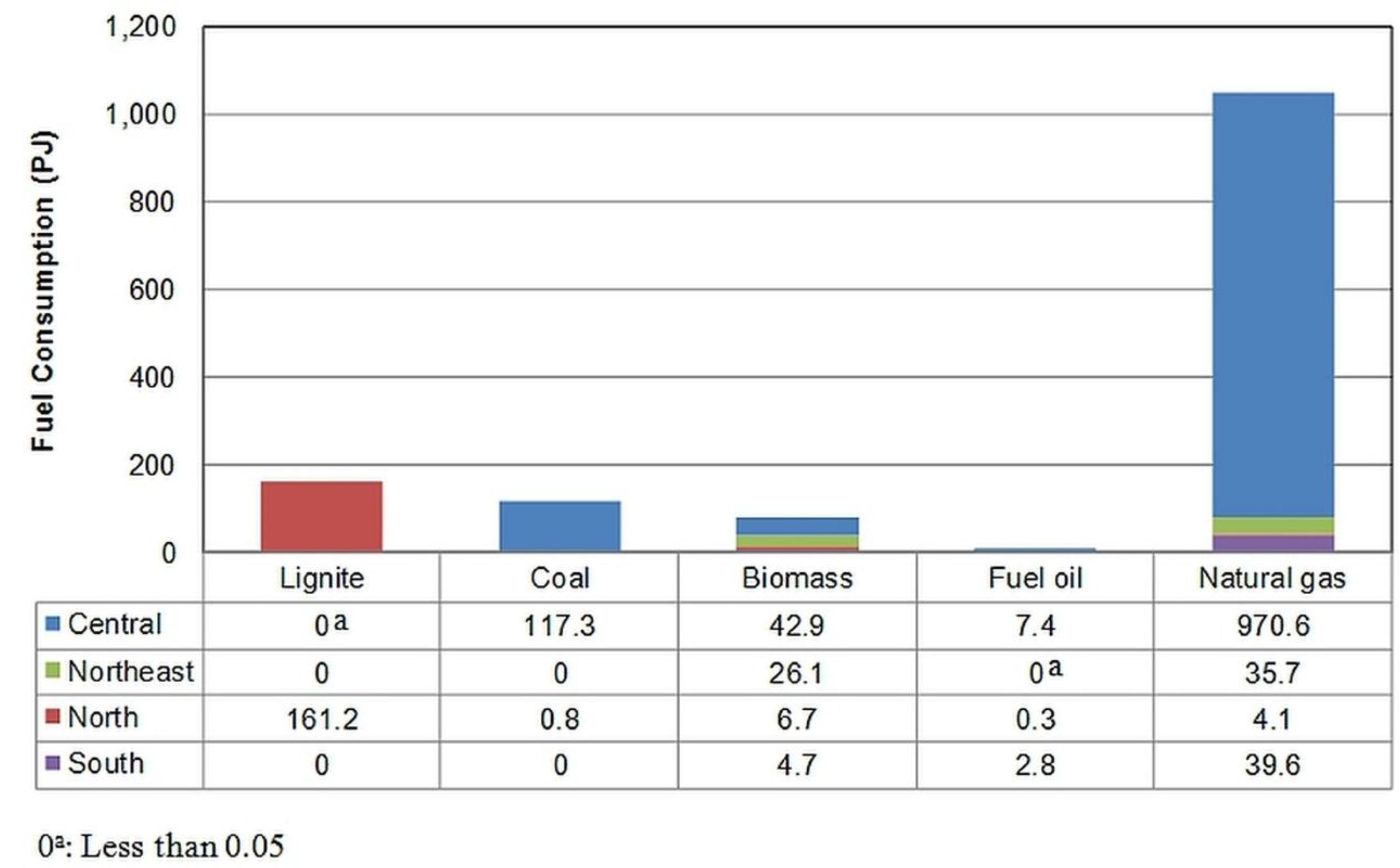
2.3. Projected Hg Emissions from Power Sector to 2030
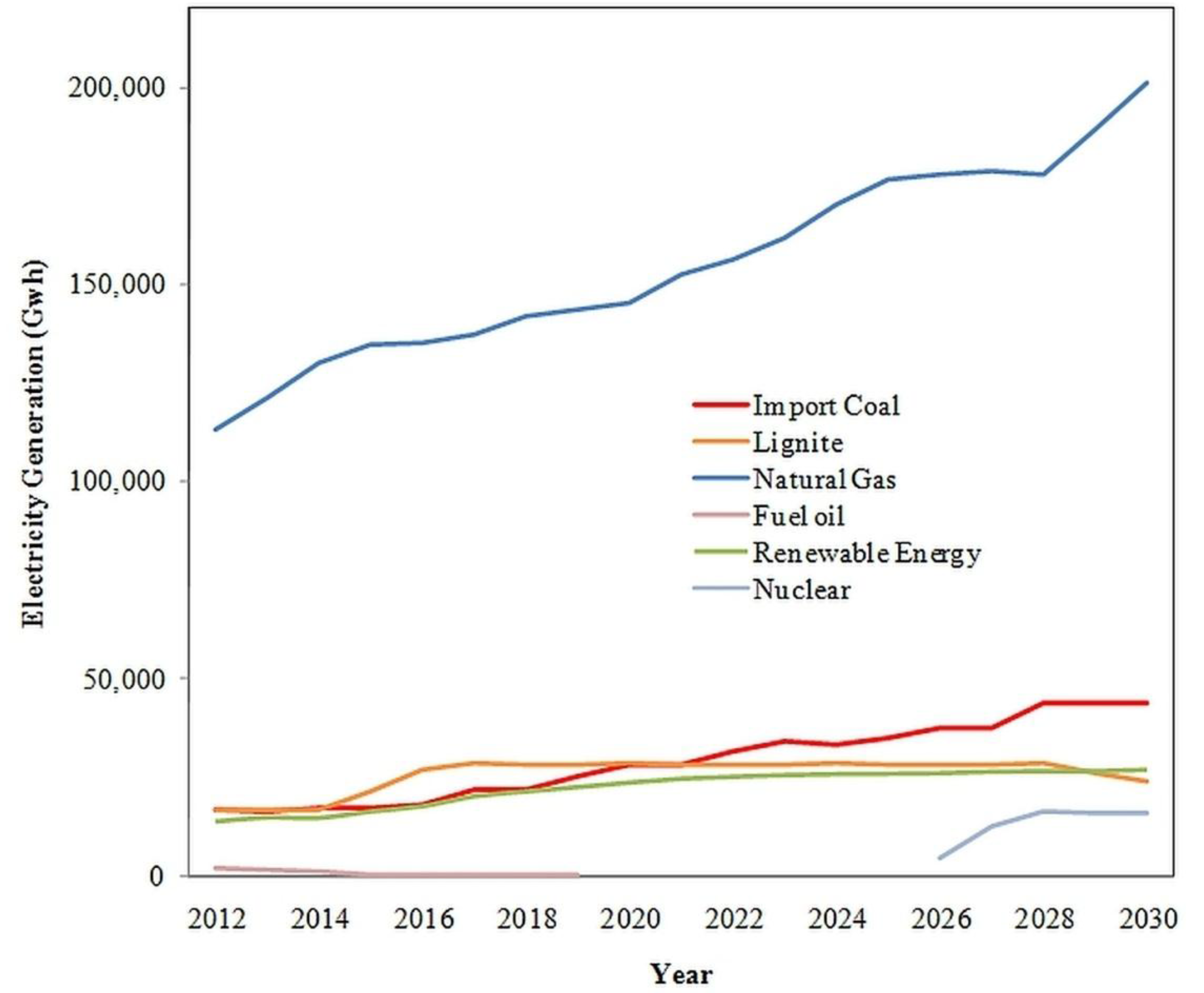
3. Results and Discussions
3.1. Atmospheric Hg Emissions from Thailand’s Power Sector in 2010
| Region | Sector | Fuel Oil | Coal | Lignite | Biomass | Total |
|---|---|---|---|---|---|---|
| Central | EGAT | 1.0 | - | - | - | 1.0 |
| IPP | - | 53.9 | - | - | 53.9 | |
| SPP & VSPP | - | 101.8 | 0.3 | 29.1 | 131.2 | |
| Northern | EGAT | 0.4 | - | 627.4 | - | 627.8 |
| IPP | - | - | - | - | - | |
| SPP & VSPP | - | 2.2 | - | 6.6 | 8.8 | |
| Northeastern | EGAT | 0a | - | - | - | 0 a |
| IPP | - | - | - | - | - | |
| SPP & VSPP | - | - | - | 17.3 | 17.3 | |
| Southern | EGAT | 0.9 | - | - | - | 0.9 |
| IPP | - | - | - | - | - | |
| SPP & VSPP | - | - | - | 3.6 | 3.6 | |
| Total | 2.3 | 157.9 | 627.7 | 56.6 | 844.5 | |
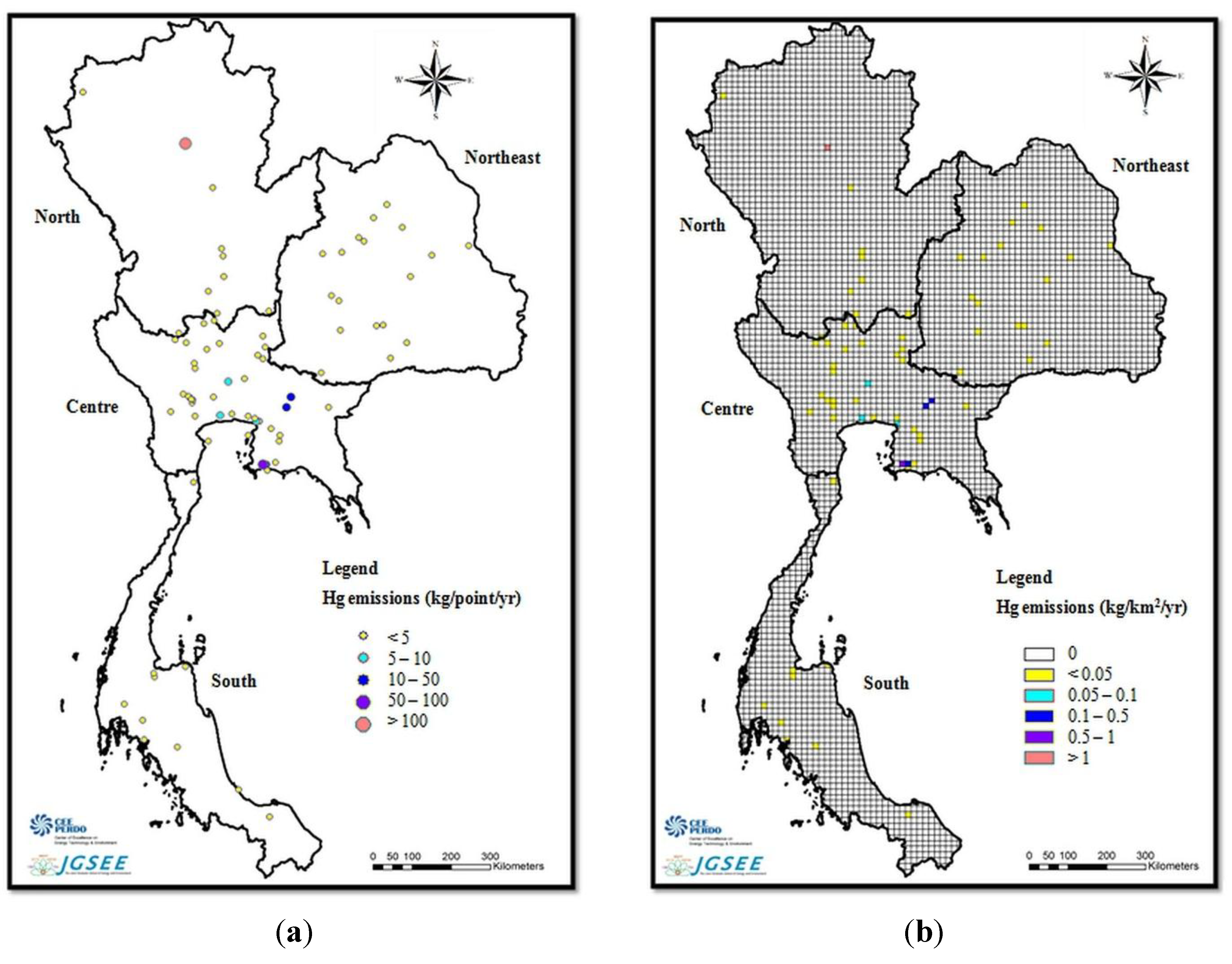
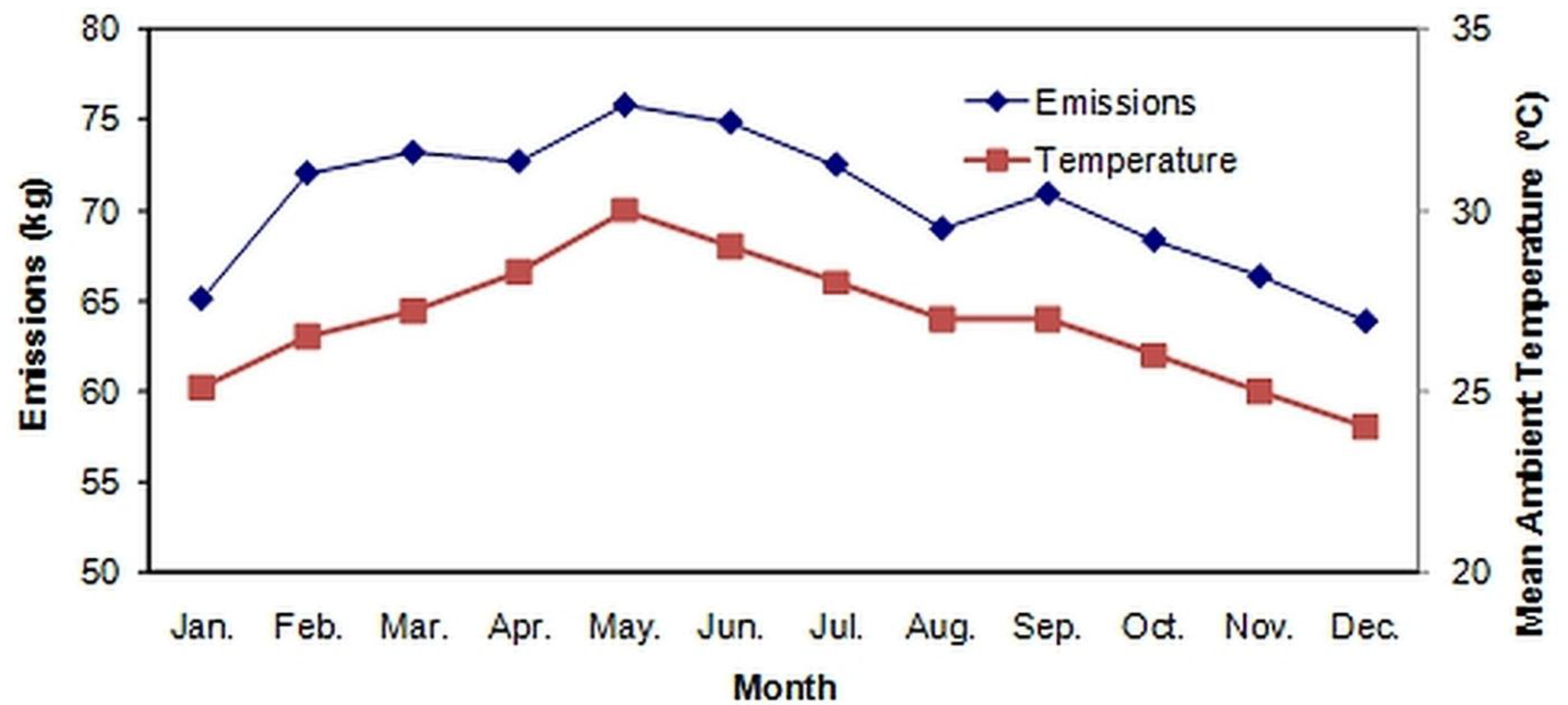
3.2. Projection of Hg Emissions in Thailand to 2030
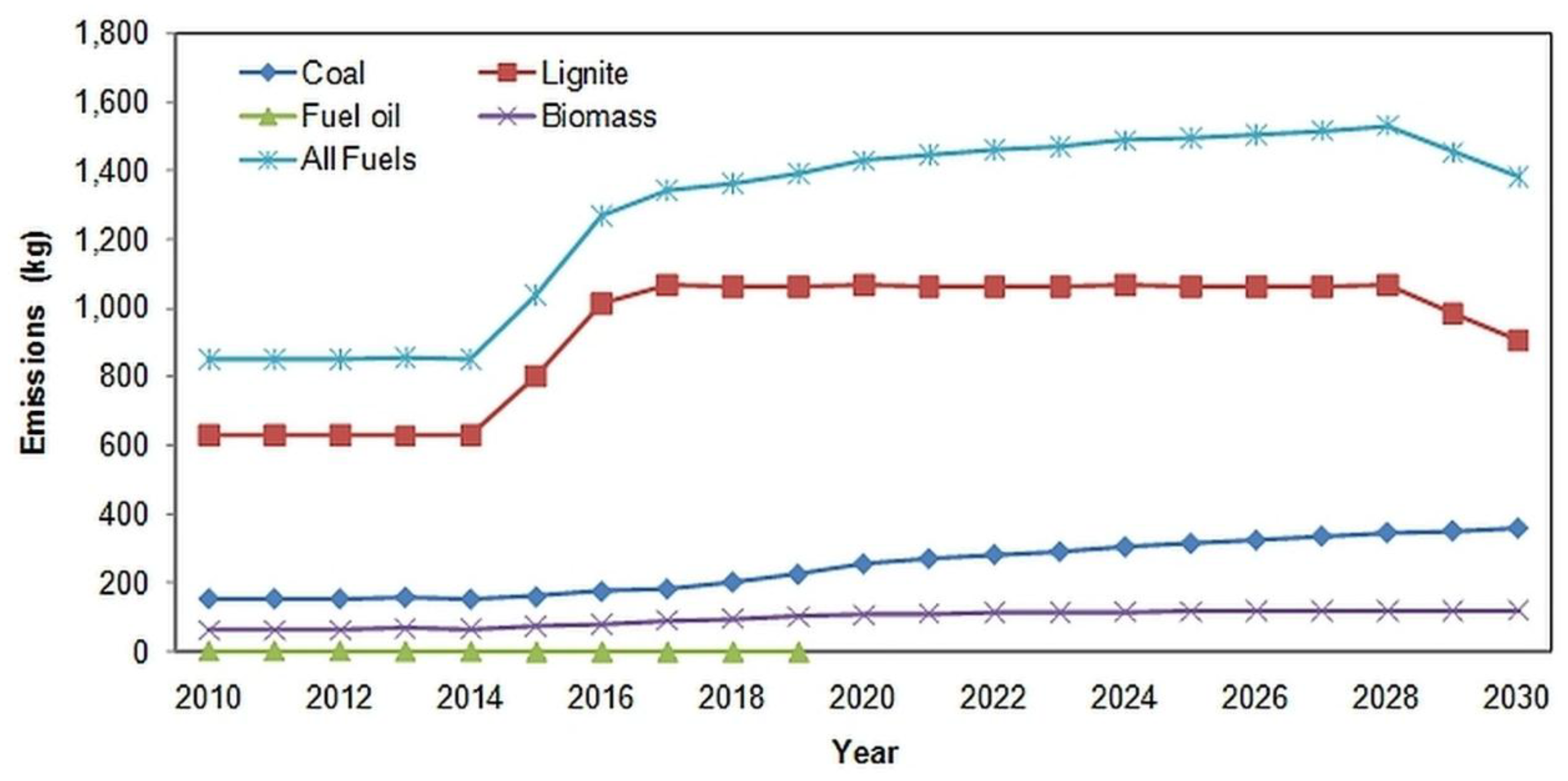
3.3. Comparisons of Results of This Study and Literature
4. Conclusions
Acknowledgments
Author Contributions
Conflicts of Interest
References
- United Nations Environment Program. Global Mercury Assessment; United Nations Environment Program, 2002; p. 270. Available online: http://www.unep.org/gc/gc22/Document/UNEP-GC22-INF3.pdf (accessed on 2 November 2012).
- Pirrone, N.; Cinnirella, S.; Feng, X.; Finkelman, R.B.; Friedli, H.R.; Leaner, J.; Mason, R.; Mukherjee, A.B.; Stracher, G.; Streets, D.G.; et al. Global mercury emissions to the atmosphere from natural and anthropogenic sources. Atmos. Chem. Phys. 2010, 10, 4719–4752. [Google Scholar] [CrossRef]
- United States Environmental Protection Agency. Mercury Study Report to Congress Volume V: Health Effects of Mercury and Mercury Compounds; United States Environmental Protection Agency, 1997. Available online: http://www.epa.gov/ttn/caaa/t3/reports/volume5.pdf (accessed on 2 August 2010).
- Ui, J. (Ed.) Minamata disease. Industrial Pollution in Japan; The United Nations University Press: Tokyo, Japan, 1992; p. 777. Available online: http://archive.unu.edu/unupress/unupbooks/uu35ie/uu35ie00.htm#Contents (accessed on 2 August 2010).
- Sullivan, T.M.; Bowerman, B.; Adams, J.; Milian, L.; Lipfert, F.; Subramaniam, S.; Blake, R. Local Impact of Mercury Emissions from Coal Fired Power Plants; Brookhaven National Laboratory: United States, 2005; p. 19. Available online: http://www.bnl.gov/isd/documents/31077.pdf (accessed on 2 August 2014).
- Umbangtalad, S.; Parkpian, P.; Visvanathan, C.; Delaune, R.; Jugsujinda, A. Assessment of Hg contamination and exposure to miners and schoolchildren at a small-scale gold mining and recovery operation in Thailand. J. Environ. Sci. Health 2007, 42, 2071–2079. [Google Scholar] [CrossRef]
- Hani, A. Spatial distribution and risk assessment of As, Hg, Co and Cr in Kaveh industrial city, using geostatistic and GIS. World Academy of Science, Eng. Technol. 2010, 71, 8–13. [Google Scholar]
- Pollution Control Department. Mercury Assessment in Thailand; Ministry of Natural Resources and Environment, Thailand, 2001; p. 28. Available online: http://www.chem.unep.ch/mercury/2001-gov-sub/sub53gov.pdf (accessed on 17 July 2012).
- United States Environmental Protection Agency. Overview - the Clean Air Act Amendments of 1990; United States Environmental Protection Agency: United States, 1989. Available online: http://epa.gov/oar/caa/caaa_overview.html#titleVII (accessed on 17 June 2010).
- Arctic Monitoring and Assessment Program/United Nations Environment Program. Technical Background Report for the Global Mercury Assessment 2013; Arctic Monitoring and Assessment Program: Oslo, Norway/UNEP Chemicals Branch, Geneva, Switzerland, 2013; p. 263. http://www.amap.no/documents/doc/technical-background-report-for-the-global-mercury-assessment-2013/848 (accessed on 17 June 2014).
- Arctic Monitoring and Assessment Program/United Nations Environment Program. Technical Background Report to the Global Atmospheric Mercury Assessment; Arctic Monitoring and Assessment Program: Oslo, Norway/UNEP Chemicals Branch, Geneva, 2008; p. 159. Available online: http://www.unep.org/chemicalsandwaste/Portals/9/Mercury/Documents/Publications/Technical_background_report.pdf (accessed on 14 June 2011).
- United Nations Environment Program. Toolkit for Identification and Quantification of Mercury Release_ version 1.1; United Nations Environment Program, 2011; p. 312. Available online: http://www.unep.org/chemicalsandwaste/Portals/9/Mercury/Documents/Publications/Toolkit/Hg%20Toolkit-Reference-Report-rev-Jan11.pdf (accessed on 22 April 2013).
- Lee, S.J.; Seo, Y.-C.; Jurng, J.; Hong, J.-H.; Park, J.-W.; Hyun, J.E.; Lee, T.G. Mercury emissions from selected stationary combustion sources in Korea. Sci. Total Environ. 2004, 325, 155–161. [Google Scholar]
- Park, K.S.; Seo, Y.-C.; Lee, S.J.; Lee, J.H. Emission and speciation of mercury from various combustion sources. Powder Technol. 2008, 180, 151–156. [Google Scholar] [CrossRef]
- Pavlish, J.H.; Hamre, L.L.; Zhuang, Y. Mercury control technologies for coal combustion and gasification systems. Fuel 2010, 89, 838–847. [Google Scholar] [CrossRef]
- Office of Natural Resources and Environmental Policy and Planning. Environmental Impact Assessment database (in Thai). Available online: http://www.onep.go.th/ (accessed on 24 September 2011).
- Pollution Control Department. Development of Approach and Measures to Efficiently and Appropriately Manage Mercury in Thailand-Final Report; Ministry of Natural Resources and Environment: Bangkok, Thailand, 2013; p. 512. (in Thai) [Google Scholar]
- Streets, D.G.; Hao, J.; Wu, Y.; Jiang, J.; Chan, M.; Tian, H.; Feng, X. Anthropogenic mercury emissions in China. Atmos. Environ. 2005, 39, 7789–7806. [Google Scholar] [CrossRef]
- Energy Policy and Planning Office. IPP, SPP and VSPP in Thailand. Ministry of Energy: Thailand, 2013. Available online: http://www.eppo.go.th/power/data/ (accessed on 14 April 2014).
- Department of Alternative Energy Development and Efficiency. Electric Power in Thailand; Ministry of Energy: Thailand, 2011; p. 61. Available online: http://www4.dede.go.th/article_attach/ELECTRIC%20POWER%20IN%20THAILAND%202010.pdf (accessed on 14 April 2012).
- Energy Regulation Commissions. List of power plants in Thailand (in Thai). Available online: http://www.erc.or.th/ERCWeb2/EN/Default.aspx (accessed on 14 January 2012).
- Integrating Knowledge to Inform Mercury Policy. Mercury Arising from Oil and Gas Production in the United Kingdom and UK Continental Shelf; Natural Environment Research Council: United Kingdom, 2012; p. 42. Available online: http://www.mercurynetwork.org.uk/wp-content/uploads/2009/09/IKIMP-Oil-and-Gas-2012-Final-Report.pdf (accessed on 11 August 2012).
- Pollution Control Department. Thailand State of Pollution Report 2010; Ministry of Natural Resource and Environment: Thailand, 2012; p. 244. Available online: http://www.pcd.go.th/count/mgtdl.cfm?FileName=Report_Eng2553.pdf&BookName=ThailandStatePollutionReport2010 (accessed on 14 June 2013).
- Sloss, L. Mercury Emissions from India and South East Asia. International Energy Agency Clean Coal Centre, 2012; p. 42. Available online: http://www.unep.org/chemicalsandwaste/Portals/9/Mercury/Documents/coal/Lesley%20Sloss-Mercury%20Emissions%20from%20India%20and%20South%20East%20Asia.pdf (accessed on 14 April 2012).
- Pollution Control Department. The Study of Mercury and Metals Emission from Industrial Combustion Process-Final Report; Ministry of Natural Resource and Environment: Bangkok, Thailand, 2010; p. 250. (in Thai) [Google Scholar]
- Energy Policy and Planning Office. Summary of Thailand Power Development Plan 2012–2030 (Revision 3); Ministry of Energy: Thailand, 2012; p. 32. Available online: http://www.erc.or.th/ERCWeb2/Upload/Document/PDP2010-Rev3-Cab19Jun2012-E.pdf (accessed on 04 April 2014).
- National Statistics Office of Thailand. The 2010 Population and Housing Census; Ministry of Information and Communication Technology: Thailand, 2012; p. 235. Available online: http://popcensus.nso.go.th/upload/census-report-6–4-54-en.pdf (accessed on 28 June 2012).
- Hemisphere Transport Air Pollution. HTAP v2. Available online: http://edgar.jrc.ec.europa.eu/htap_v2/index.php?SECURE=123 (accessed on 23 November 2013).
- Holmes, C.D.; Jacob, D.J.; Corbitt, E.S.; Mao, J.; Yang, X.; Talbot, R.; Slemr, F. Global atmospheric model for mercury including oxidation by bromine atoms. Atmos. Chem. Phys. 2010, 10, 12037–12057. [Google Scholar] [CrossRef]
- Pham, T.B.T.; Manomaiphiboon, K.; Vongmahadlek, C. Development of an inventory and temporal allocation profiles of emissions from power plants and industrial facilities in Thailand. Sci. Total Environ. 2008, 397, 103–118. [Google Scholar] [CrossRef] [PubMed]
© 2015 by the authors; licensee MDPI, Basel, Switzerland. This article is an open access article distributed under the terms and conditions of the Creative Commons Attribution license (http://creativecommons.org/licenses/by/4.0/).
Share and Cite
Pham, T.T.B.; Junpen, A.; Garivait, S. An Investigation of Atmospheric Mercury from Power Sector in Thailand. Atmosphere 2015, 6, 490-502. https://doi.org/10.3390/atmos6040490
Pham TTB, Junpen A, Garivait S. An Investigation of Atmospheric Mercury from Power Sector in Thailand. Atmosphere. 2015; 6(4):490-502. https://doi.org/10.3390/atmos6040490
Chicago/Turabian StylePham, Thao Thi Bich, Agapol Junpen, and Savitri Garivait. 2015. "An Investigation of Atmospheric Mercury from Power Sector in Thailand" Atmosphere 6, no. 4: 490-502. https://doi.org/10.3390/atmos6040490





